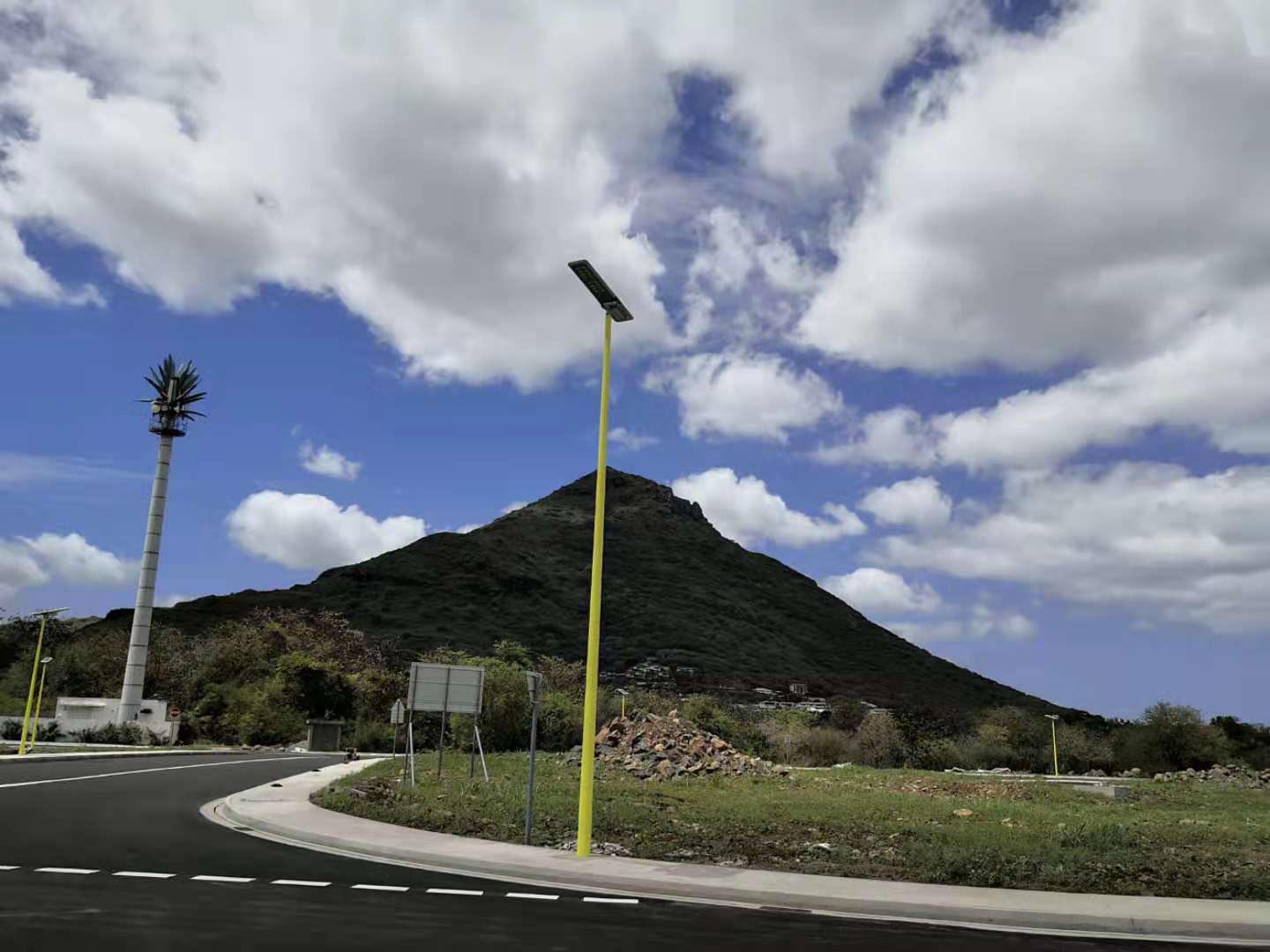At a time when the world is advocating for green, low-carbon, and sustainable development, the lighting industry has also ushered in a revolution. Solar street lights, with their clean and renewable energy characteristics, are gradually becoming the new favorites for road lighting. They not only reduce dependence on traditional electricity but also lead the lighting industry towards a more green and intelligent direction with their high efficiency, energy-saving, and environmentally friendly features. In this article, we will analyze the latest advancements in solar street light technology, look forward to its future development trends, and discuss how this technology can promote innovation in the lighting industry.

The Latest Progress in Solar Street Light Technology
The technological development of solar street lights is changing rapidly, with the latest progress mainly reflected in solar panels, LED lamps, and energy storage systems. Diversified brightness options and the application of high-capacity lithium batteries provide more flexible and enduring lighting solutions for solar street lights. For instance, the ATLAS series of solar street lights offers a range of brightness options from 2000LM to 10,000LM to accommodate various lighting needs, while battery capacities range from 153.92WH to 692.64WH to support extended lighting durations.
Solar Panels: With the continuous advancement of photovoltaic technology, the conversion efficiency of solar panels has significantly improved. Currently, the conversion efficiency of high-efficiency solar panels has exceeded 20%, meaning more solar energy can be converted into electrical energy for continuous and stable lighting of street lights.
LED Lamps: LED lamps have become the ideal choice for solar street lights due to their high efficiency, energy-saving, and long life. In recent years, the luminous efficacy of LED luminaires has increased, and the color temperature has become more natural, making the lighting effect of solar street lights more comfortable and aesthetically pleasing. The ATLAS series features OSRAM brand 3030 model LEDs, with quantities ranging from 20pcs to 160pcs, providing high-efficiency and long-life lighting.
Energy Storage System: The energy storage system is a crucial component of solar street lights, responsible for storing the electricity generated by solar panels for use at night or during cloudy or rainy days. With the ongoing development of lithium battery technology, the energy storage systems of solar street lights now have larger capacities, longer lifespans, and higher safety.
The Future Trends of Solar Street Lights
The future trends of solar street lights point towards intelligence, networking, and integration. The introduction of intelligent lighting modes, such as the three lighting modes (M1, M2, M3) provided by the ATLAS series, including PIR sensor control, adapts to various usage scenarios and energy-saving needs, indicating that solar street lights will become more intelligent and energy-efficient.
Intelligent: Intelligent control systems will become standard for solar street lights. Through intelligent control, street lights can automatically adjust brightness based on weather, time, and foot traffic, achieving more energy-efficient and efficient lighting. Additionally, intelligent control systems can enable remote monitoring and management of street lights, reducing maintenance costs.
Networking: The development of Internet of Things (IoT) technology makes remote monitoring and maintenance of solar street lights possible. Through network connections, the status information of street lights can be transmitted to a monitoring center in real time for remote monitoring and fault warning. At the same time, street lights can also receive control instructions through the network, enabling more flexible and intelligent lighting control.
Integration: The integration trend of solar street lights will become more evident. In the future, solar street lights will not only be lighting devices but also intelligent platforms integrating various functions. For example, street lights can integrate environmental monitoring, security surveillance, traffic management, and other functions to achieve multi-purpose lighting.
How Solar Street Light Technology Promotes Innovation in the Lighting Industry
The innovation of solar street light technology is reflected not only in the product itself but also profoundly impacts the lighting industry’s design concepts, manufacturing processes, and service systems. High luminous efficacy and high color temperature with color rendering characteristics, such as the ATLAS series, all models have achieved a high luminous efficacy of 230lm/W, a fixed color temperature of 5700K, and a color rendering index Ra>70, ensuring the quality of lighting and visual comfort, which are embodiments of innovation in the lighting industry.
Design Concept: The promotion of solar street lights has led the lighting industry to focus on green and environmentally friendly design concepts. Designers have begun to explore how to utilize natural light and optimize the layout and brightness settings of street lights to achieve energy conservation and emission reduction.
Manufacturing Process: With the continuous development of solar street light technology, the manufacturing processes of the lighting industry have also improved. For example, modular design makes the manufacturing of street lights more flexible and efficient; customized services meet the lighting needs in various scenarios.
Service System: The intelligent and networked characteristics of solar street lights have led the lighting industry to focus on improving the service system. For instance, remote monitoring and fault early warning can promptly discover and resolve street light issues; data analysis can help management departments better understand the usage of street lights and provide a basis for future planning and improvement.
Case Study and Empirical Analysis
Solar street light technology has been widely applied worldwide. The following are some successful case studies:
For example, the wide application of ATLAS series solar street lights around the world, especially the installation example of a certain roadside in Canada, provides us with a concrete application scenario to analyze its technical advantages and practical effects.

Canada has special geographic location and climatic conditions, so it is particularly important to choose the right power of solar modules when designing solar street lights. In the design process, it is necessary to take into account the light affected by the climatic environment and geographic location to ensure that the solar street light system can operate stably under different weather conditions. In the case of solar street light installation on Canadian highways, real-time monitoring may be used to make necessary adjustments to the design parameters in order to determine an economically reasonable configuration of solar modules, batteries, and lighting sources. This design method not only reduces the system cost and saves the use of space, but also ensures that the solar street light can still supply lighting normally under conditions of continuous light shortage, such as continuous cloudy days. In addition, Canada is developing intelligent highways with night-lighting, dynamic paint, interactive sensor lights, and sensor lanes for automatic charging of electric vehicles, etc. This complements the technical characteristics of ATLAS solar streetlights and further confirms their global leadership and applicability.
Rural Trail Lighting: In some remote areas, traditional street lights are difficult to use due to inadequate power facilities. Solar street lights, with their independent power supply, have been widely applied in these areas. By installing solar street lights, these areas have achieved a significant increase in nighttime lighting coverage.
Through these specific cases, we can see how solar street light technology demonstrates its innovation and efficiency in practical applications, providing new directions and possibilities for the future development of the lighting industry.
Challenges and Strategies
Despite the promising future of solar street light technology, it still faces some challenges:
Cost Issue: Currently, the cost of solar street lights is still high, limiting their popularization and application in some areas. To reduce costs, technological innovation and large-scale production can be pursued.
Technical Stability: Since solar street lights rely on solar power generation, they may experience insufficient power supply under adverse weather conditions. To address this issue, the power supply stability of street lights can be improved by optimizing the energy storage system and enhancing the conversion efficiency of solar panels.
Policy Support: The government plays a vital role in promoting and applying solar street lights. To foster the development of solar street lights, the government can introduce relevant policies and measures to provide financial subsidies, tax incentives, and other support.
The advancement of solar street light technology not only brings a new development direction for the lighting industry but also supports the realization of a green, environmentally friendly, and sustainable lifestyle. With the continuous maturation of technology and market expansion, solar street lights will undoubtedly become the future stars of the lighting industry. We look forward to the emergence of more innovative technologies and applications that bring more convenience and beauty to people’s lives.